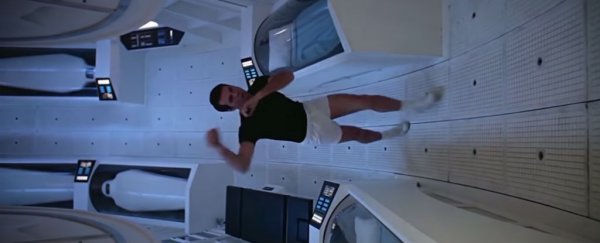One of the scariest things about sending humans on long journeys into space to colonise some other planet is how completely debilitating life in microgravity actually is. British astronaut Tim Peak says he feels like he's recovering from the worst hangover ever after spending six months on the International Space Station, and NASA astronaut Scott Kelly's skin is still burning, even months after returning home.
With a trip to Mars expected to take at least seven months, surely there has to be a better way to exist in space without getting absolutely rekt, right?
The problem with living in space is the stark difference in gravitational force, which can wreak havoc on an astronaut's bone density, and could even mess with their metabolism and liver health.
The solution is to recreate the conditions of Earth inside a spacecraft, so the body doesn't have to adapt to different gravitational forces. But creating artificial gravity à la 2001: A Space Odyssey or Elysium is a whole lot easier said than done, as this video by Real Engineering explains.
The basic idea is that if you spin a spacecraft in just the right way, the centrifugal forces will create an artificial force of gravity on the inside that will prevent all that floating action.
NASA's been experimenting with this since the 1960s, and you can see their experiment in action in the video above. It looks so great! So why haven't we started using this technology in long-term space habitats like the International Space Station?
Quite simply, the size of the spacecraft needed to create enough artificial gravity is enormous, and therefore enormously expensive. "The acceleration your body would experience is directly proportional to the speed and radius of the space station," explains Real Engineering, and when you see the maths, you'll understand the implications.
For example, to recreate gravitational conditions of Earth on something the size of the International Space Station, it would need to rotate once every 10 seconds, which isn't exactly the most inviting prospect for those living inside - not to mention the fact that their heads would be experiencing a different gravitational force than their feet.
But what if money wasn't an issue, and we really could build something as big as Elysium. Could it work?
I'll let the video above explain that one, but let's just say it's definitely not impossible, if 500,000 very wealthy prospective space tourists want it bad enough…
